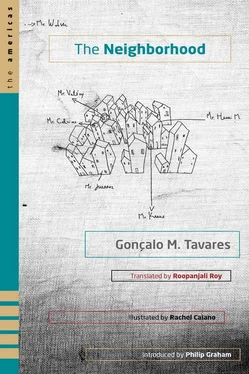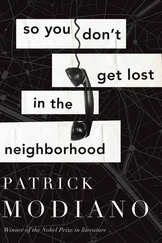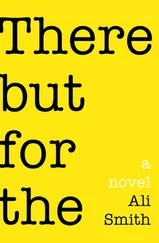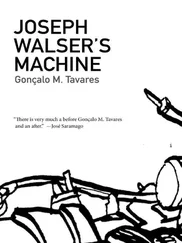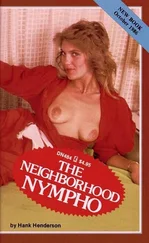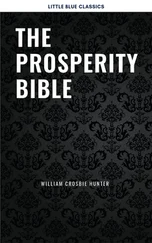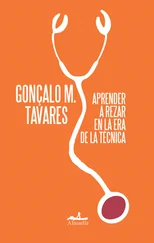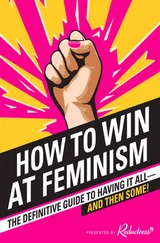The Sneeze

Mister Valéry was afraid of the rain.
For years, he trained diligently to improve his fleetness in order to dodge the raindrops that fell from the sky. He became an expert.
He said, “This is how I avoid the rain.”
And, representing himself as an arrow, drew
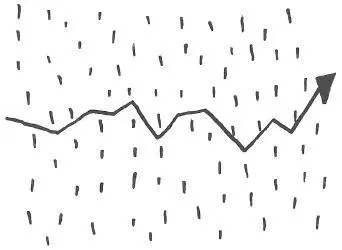
“Finally,” said Mister Valéry, “here I am, completely dry and without an umbrella. I hate unsightly objects,” he said.
One day, however, by accident, a lady who was cleaning the pavement threw a bucket full of water onto the road at the precise moment when Mister Valéry was passing by.
Completely drenched, Mister Valéry explained, “I was looking at the sky when it happened.”
And added, “If the vertical and the horizontal planes meet there is always a point caught in the middle.”
And he then drew
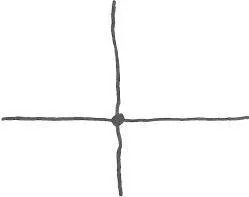
“This point,” muttered Mister Valéry, water still dripping from his hair, “this point was me.”
“Fate,” said Mister Valéry. “I do not know what that is.”
And concluded with a loud sneeze.
The Shoes

Mister Valéry used to walk about with a black shoe on his right foot and a white shoe on his left foot.
One day, he was told, “You’ve switched shoes.”
And everyone laughed.
Mister Valéry looked at his feet and, smacking his forehead, exclaimed, “How foolish of me!”
He returned home, changed his shoes, and went out again, later, with a black shoe on his left foot and a white shoe on his right foot.
When they again told him, increasingly amused, “You’ve switched shoes again!” Mister Valéry grew impatient.
However, remembering the principles of logic that he had learned, he gritted his teeth and while continuing his walk, said to himself, “No. Now they have to be correct.”
Mister Valéry explained, “It seems a paradox, but it really is so: if they were on the wrong way, it would be necessary to switch them once again for them to be on the correct way.”
And he drew
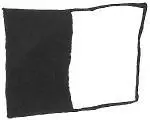
And then he drew
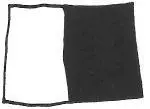
“One of these two situations has to be correct for the other to be wrong, since they are the inverse of each other. And if they say that the two are wrong it is because the two are right.”
After reaching this conclusion, Mister Valéry never worried about whether he was wearing a black shoe on his right foot or on his left foot again. It’s always correct, he thought.
The Holiday Home

Mister Valéry had a unidimensional home where he used to spend his holidays. The door and the façade were the only things that existed there.
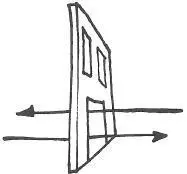
“One can enter and exit in both directions,” said Mister Valéry, completely content.
He liked his holiday home.
The only thing better would be a house with four doors, in a square, without any walls.
The center would be the only place where one could be seated.
Mister Valéry drew a sketch.
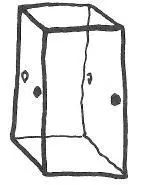
He called it: the house of the four joined doors.
“One can enter from any side and it is always the same. This is the holiday home I would like,” said Mister Valéry.
“I would avoid getting lost in rooms,” he said. “There would only be doors. It’s just that I only manage to rest if I do not have to make any decisions, and for this to happen it is essential that there be no choices. It seems perfectly logical to me.”
“This is my dream, this house,” murmured Mister Valéry. “It would be a perfect holiday.”
The Cube

Mister Valéry always slept standing up so as not to fall asleep.
He explained, “A tower is designed to see everything.” And added, “There are no horizontal towers.”
However, piqued, Mister Valéry decided to draw a tower on its side.

And he later explained, “If the tower were a cube we would see the same thing, from above, irrespective of whether it was vertical or horizontal.”
And he drew a tower in the shape of a cube, horizontally.
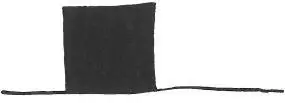
He then drew a tower in the shape of a cube, vertically.

“See that? It’s the same.”
And Mister Valéry concluded by saying, in a philosophical and profound tone, “If all things were cubes, there would be fewer arguments. And there wouldn’t be any doubts.”
After a brief pause, Mister Valéry added, “I sleep standing up for a good reason.”
The Marriage

Mister Valéry was married to an ambiguous being, as he himself used to say.
When Mister Valéry needed something that we can term X, the being was X; and when he needed something that we can term Y, the being was Y.
The marriage worked because Mister Valéry had only two desires.
Mister Valéry explained, “The being I married is like this” (and he drew)
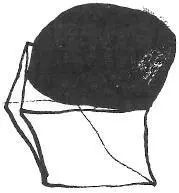
If it were only like this
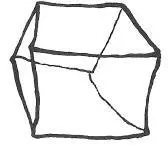
I would grow weary.
And if it were like this
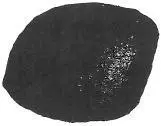
I would get bored.
“Fortunately,” said Mister Valéry, “there are imperfect cubes and spheres.”
And in a rare play on words, he concluded, ironically, “And that, for me, is perfect.”
However, nobody had ever seen Mister Valéry with company.
A Journey on Foot

Mister Valéry walked everywhere. He walked quickly, taking small steps. (In this regard he was like Mr. Sommer, a neighbor).
Читать дальше
